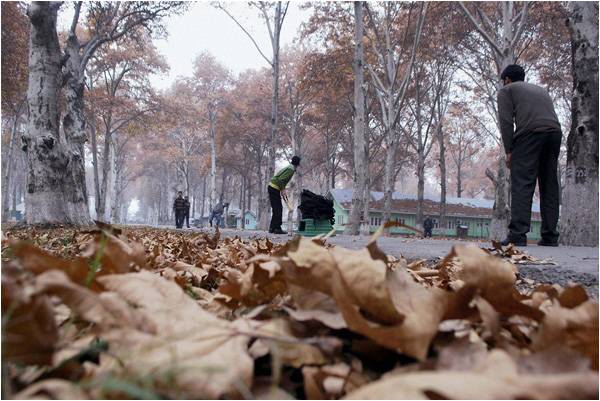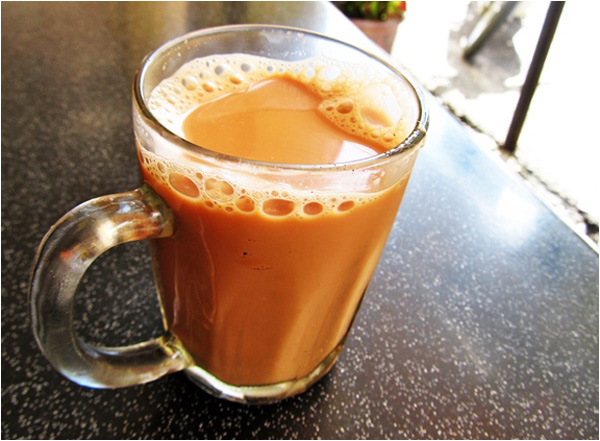
Last month, the passing out of students at Kashmir University was unusual. Though a small number, the students who had gathered to exchange hugs and good wishes before they part were not just local. Apart from pupils from various parts of Kashmir, there were nine students who had come from as far as Afghanistan, Bangladesh, Nepal and Bhutan. Students from Kashmir going to rest of India or the world is something we have seen for long time, but someone coming from a different country has been unheard of in the state, especially in the last 25 years of turmoil. Before 1989, the National Institute of Technology, then known as Regional Engineering College, would be full of foreigners – mostly from Arab countries.
The scenes at UNESCO Madanjeet Singh Institute of Kashmir Studies (UMIKS) at Kashmir University’s sprawling Chinar-dominated Naseem Bagh were different. Apart from the usual messages of good luck, students had cooked ethnic food, recited poetry in their own languages, and did much more to make it look like a mini-South Asia festival. It was a convergence of cultures and traditions. Kashmiris are proud of their culture and traditions, but the last over two decades, they have become much more conscious about their identity. They see a threat in every such initiative. This is mostly because the society has passed through a painful conflict and its connections with outside cultures have been minimized. It has seen the Indian state as a threat to its existence and anything associated with it is seen with suspicion.
To have a joint programme with students from different cultures and backgrounds surely becomes significant, in this context. UMIKS has been doing a commendable job in making this possible at academic and intellectual level. The nine students said they enjoyed their stay in Kashmir, which they repeatedly referred to as their second home. Given the atmosphere and the situation on the ground, Kashmir playing a “good host” to them is something very positive. The way Mona Hossaini, a student from Afghanistan, drew parallels between the “pain” in Kashmir and Kabul was evident of the fact that in two years she has been able to understand what an average Kashmiri has gone through. She was also surprised to see “love showered on me by Kashmiris even as Afghans have been the most tyrant rulers for them”. The students from Bangladesh, Nepal and Bhutan talked about unconditional hospitality in Kashmiri homes and a comfortable camaraderie they found in the hostels. The students were pursuing a Master’s degree in Kashmir and South Asian Studies, a blended course that gives various perspectives on the situations prevailing in South Asian countries.

At the time when SAARC is struggling to live up to its concept due to political wrangling in the region, the successful passing out from UMIKS is a big statement from Kashmir. Though this time Pakistan was missing from the list, in the past, two students have passed out with doctorate degrees, one among them a girl from Kusoor in Punjab province of Pakistan. Not only does such a programme come with a promise to build relations within the regions it also throws up an opportunity to reclaim Kashmir’s status as the seat of learning, which has quenched the thirst of many famous scholars like Heun Tsang.
A book by EF Knight rightly describes Kashmir as a place “Where Three Empires Meet”. To reclaim that distinction, Kashmir University can play an important role and the UMIKS can be used as a flagship centre to open its doors for foreign scholars to make Srinagar a center of knowledge.
The director of UMIKS and renowned political scientist Prof Gull Mohammad Wani sees a bright future for the centre. “It helps Kashmir to be projected in a better way,” he says. According Mehmood ur Rashid, a faculty at UMIKS, “This classroom should be seen as investment in a peaceful and just future.”
Founded in 2006, the Institute has seen turbulent times in terms of credibility, as there was little clarity about its objectives. However, from 2008 onwards, it started picking up, with the South Asia Foundation providing seed money and then the scholarships for students. As of now, SAF and KU have a Memorandum of Understanding that makes it a constituent unit of KU. Looking at the progress made by Institute, there is huge scope for expanding it and making it a centre of reconciliation and peace for SAARC countries. While Kashmir really needs permanent peace and dignity, the SAARC experiment is mainly failing due to the Kashmir dispute itself. The hopes for SAARC’s success also lie under the shades of Chinars in Kashmir.
The scenes at UNESCO Madanjeet Singh Institute of Kashmir Studies (UMIKS) at Kashmir University’s sprawling Chinar-dominated Naseem Bagh were different. Apart from the usual messages of good luck, students had cooked ethnic food, recited poetry in their own languages, and did much more to make it look like a mini-South Asia festival. It was a convergence of cultures and traditions. Kashmiris are proud of their culture and traditions, but the last over two decades, they have become much more conscious about their identity. They see a threat in every such initiative. This is mostly because the society has passed through a painful conflict and its connections with outside cultures have been minimized. It has seen the Indian state as a threat to its existence and anything associated with it is seen with suspicion.
Before 1989, the National Institute of Technology would be full of foreigners
To have a joint programme with students from different cultures and backgrounds surely becomes significant, in this context. UMIKS has been doing a commendable job in making this possible at academic and intellectual level. The nine students said they enjoyed their stay in Kashmir, which they repeatedly referred to as their second home. Given the atmosphere and the situation on the ground, Kashmir playing a “good host” to them is something very positive. The way Mona Hossaini, a student from Afghanistan, drew parallels between the “pain” in Kashmir and Kabul was evident of the fact that in two years she has been able to understand what an average Kashmiri has gone through. She was also surprised to see “love showered on me by Kashmiris even as Afghans have been the most tyrant rulers for them”. The students from Bangladesh, Nepal and Bhutan talked about unconditional hospitality in Kashmiri homes and a comfortable camaraderie they found in the hostels. The students were pursuing a Master’s degree in Kashmir and South Asian Studies, a blended course that gives various perspectives on the situations prevailing in South Asian countries.

At the time when SAARC is struggling to live up to its concept due to political wrangling in the region, the successful passing out from UMIKS is a big statement from Kashmir. Though this time Pakistan was missing from the list, in the past, two students have passed out with doctorate degrees, one among them a girl from Kusoor in Punjab province of Pakistan. Not only does such a programme come with a promise to build relations within the regions it also throws up an opportunity to reclaim Kashmir’s status as the seat of learning, which has quenched the thirst of many famous scholars like Heun Tsang.
A book by EF Knight rightly describes Kashmir as a place “Where Three Empires Meet”. To reclaim that distinction, Kashmir University can play an important role and the UMIKS can be used as a flagship centre to open its doors for foreign scholars to make Srinagar a center of knowledge.
The director of UMIKS and renowned political scientist Prof Gull Mohammad Wani sees a bright future for the centre. “It helps Kashmir to be projected in a better way,” he says. According Mehmood ur Rashid, a faculty at UMIKS, “This classroom should be seen as investment in a peaceful and just future.”
Founded in 2006, the Institute has seen turbulent times in terms of credibility, as there was little clarity about its objectives. However, from 2008 onwards, it started picking up, with the South Asia Foundation providing seed money and then the scholarships for students. As of now, SAF and KU have a Memorandum of Understanding that makes it a constituent unit of KU. Looking at the progress made by Institute, there is huge scope for expanding it and making it a centre of reconciliation and peace for SAARC countries. While Kashmir really needs permanent peace and dignity, the SAARC experiment is mainly failing due to the Kashmir dispute itself. The hopes for SAARC’s success also lie under the shades of Chinars in Kashmir.

